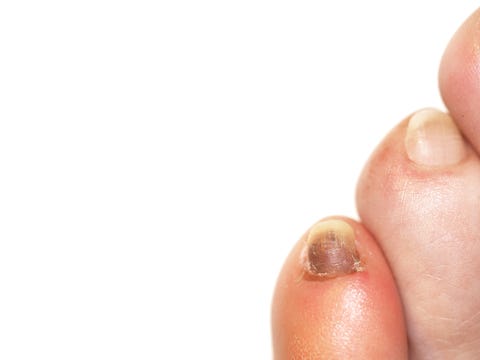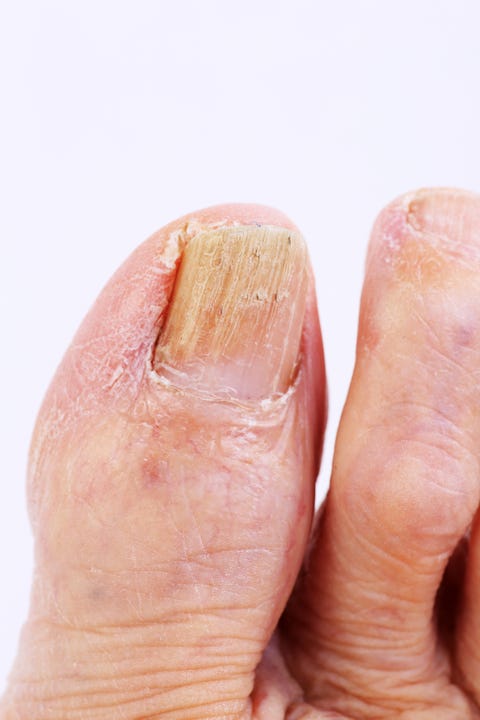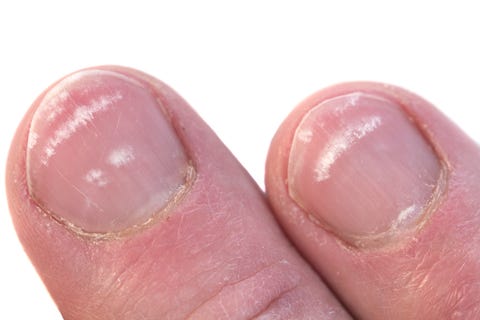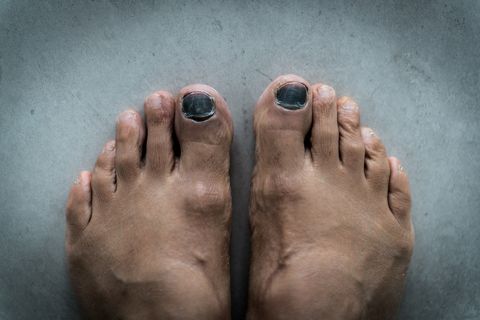buy cheap serophene overnight shipping without prescription
Every once in a while, you should take a good look at your toenails. You might joke about how your feet aren’t so pretty — especially if you’re a CrossFit junkie or get bruised nails from long-distance runs — but a less-than-desirable toenail appearance.
“Healthy nails have a plump, pink nail bed and pink nail plate with strong but thin nails, rimonabant tablets 20 mg ” says Dr. Dana Canuso, podatric surgeon and founder of Dr. Canuso Skincare for Feet.
Here’s a guide to what the color of your toenails means, and what you should do if they start looking funky.
If your toenail is…purple

If your toenails are purple, this may be due to a subungual hematoma, or bruising under the nail bed. “Small blood vessels bleed underneath the nail, staining it darker,” says Miguel Cunha, DPM, founder of the NYC-based Gotham Footcare. “This is caused by trauma to the nail, such as dropping a heavy object or severely stubbing it.” (It may also turn black due to this. See below for more on that.)
When this type of bruising occurs, the best way to deal with it is generally patience. Do nothing and simply allow the healthy nail to grow in and gradually replace the darkened nail over time. But this can take “several months to resolve, as the toe nails only grow a millimeter per month,” he says.
If the nail becomes painful, you may need to have a doctor remove it. “This can happen sometimes if the pressure of blood accumulating underneath the nail plate becomes abnormal and excessive,” Cunha says.
In some cases, however, purple nails can also signify a circulation issue—the purple color indicates that the nail is receiving less oxygen than it needs, says Canuso. There may also be pain in the toe or nail. If the reason for your purple nail is unlikely to be a bruise, you really need to get to the bottom of the circulatory issue. See your doctor if you have a purple nail and don’t remember injuring it.
If your toenails are…yellow or brown

A common reason for yellow or brown nails is toenail fungus. And if this is the case, it’s likely your nails will be thick and brittle, too. Toenail fungus can happen from wearing moist sneakers or wearing the same pair for too long. “The insides of shoes are a perfect environment to harbor fungal organisms. This condition often begins as an infection in the skin,” says Cunha. As the nail fungus penetrates deeper into the nail, it may cause the nail to discolor, thicken, and develop crumbling edges.
Treatment of this condition depends largely on the severity of the infection, and to find that out, experts say you should really go to a doctor and get a nail biopsy. This will help guide exactly what to do about it. A nail biopsy sounds kind of extreme in a world where the drugstore offers plenty of OTC remedies. But if you really want something that works against toenail discoloration and fungus—and you do, because nail fungus can take a long time to get rid of—you need to see a doctor and get that biopsy to be sure you’re using the right product to solve the right problem.
“Medicated antifungal nail lacquer may be prescribed for a localized mild to moderate infection. Prescription oral antifungal medications may be prescribed for a more serious infection,” Cunha says. Laser nail treatment is an alternative to oral medication, in which the laser passes a light through the toenail to kill the fungus without causing damage to the nail or the surrounding tissues. Just be aware that laser treatments can hurt and they’re not as well proven as the other remedies.
There are other reasons for yellow and brown nails as well, including complications from diabetes. If you have diabetes, make sure your doctor checks your feet every time you visit (you should do foot checks as well). Yellow nails could also signify—in rare cases—respiratory or lung issues. (Find out more about yellow nail syndrome here.)
If your toenail is…white or has white spots

Leukonychia, or white spots or lines on the nail, can indicate several conditions. “White lines can appear if there is recurring pressure or trauma to the nail — for instance, if a runner wears shoes that are too small and the toe continues to hit the top of the shoe,” Cunha says. White spots will form if the injury was not severe enough to break the blood vessel, which would lead to darkening.
Leukonychia can also stem from a zinc deficiency, says Canuso. If the nail is completely white, or there are white lines across the nail bed, it “can mean or a,” she says.
If the white spots are caused by injury, try taking a nail-fortifying vitamin like biotin to improve hair, skin, and nails — and of course, you should stop doing whatever traumatic activity you’ve been doing. “Be patient and simply allow the healthy nail to grow and gradually replace the white nail over time,” Cunha says. This can take several months to resolve, as toenails typically grow only about a millimeter each month.
If you are concerned you’re anemic, watch out for other symptoms such as fatigue or muscle weakness. “These could be symptoms of protein deficiency or anemia, and you should consult your physician,” Canuso says.
If your toenail is…all black
“Nails that are completely black in color may have numerous causes, such as a B12 deficiency, kidney problems, or liver disease. But the most common reason for the discoloration is trauma,” says Canuso. Simply stubbing your toe can cause a bruise to form under the toenail, which in turn can turn your nail black. And many distance runners aren’t strangers to the surprise black toenail after a long run in shoes you thought fit well.
If this happens, you must wait for the entire nail to grow out before the discoloration is gone, which can take about six to nine months, she says. If you’re concerned about any of the above conditions, consult with a physician, but rest assured that these are relatively rare.
If your toenail isn’t black, but has a black stripe running across or down it, the most common cause is a condition called linear melanonychia. “This condition occurs when pigments in the nail known as melanocytes make excess pigment, causing the nail beds to darken,” Cunha says.
The weirdest recent report of a nail stripe we’ve heard is from Beijing Children’s Hospital, where an 8-year-old came in with a mysterious blue band running down her nail. When doctors inspected it further, they noticed there was a blue substance under the nail, not in it. After talking with the girl and her family, they discovered she’d been playing with blue slime. It’s unusual for an external pigment to be that far into the nail, but doctors credit the “non-Newtonian fluid properties” of slime for allowing the pigment to siphon up the nail. The authors remind doctors to ask (which means patients can volunteer) about the history of your activities and things you’ve touched in addition to doing the usual tests. Sounds simple, but it’s easy to rely on advanced diagnostics rather than a simple conversation to inform a diagnosis.
Source: Read Full Article

